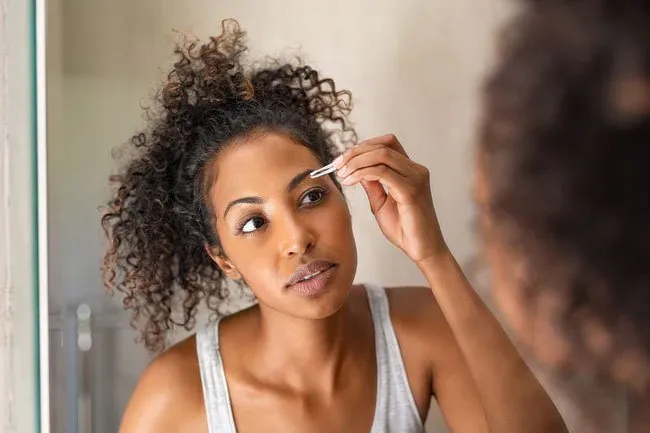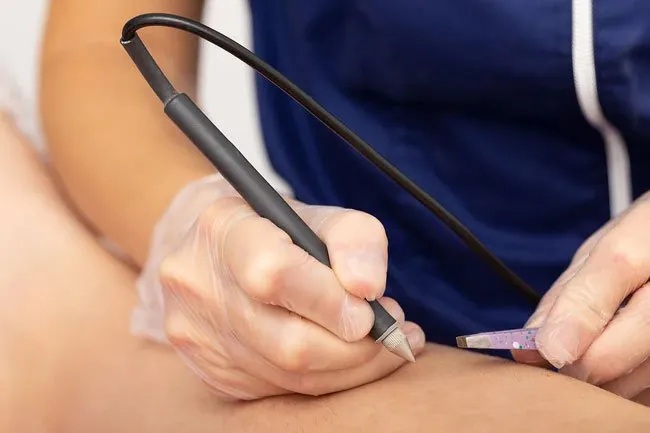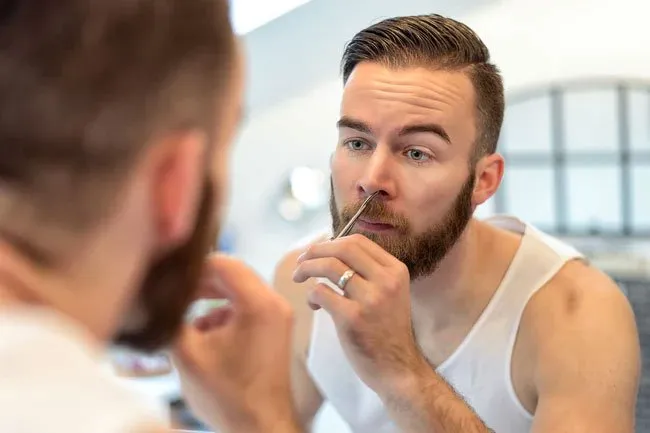Hair Today, Gone Tomorrow

Some 30% of women's and 90% of men's bodies are covered with terminal hair. That's the thicker type on your head, eyebrows, chest, back, pubic area, underarms, and so on. (The peach-fuzz kind is called vellus hair). But it seems most people want at least some of it gone. The good news is that as technology improves and techniques spread all over the world, hair removal options abound.
Plucking

Safe and cheap as a pair of tweezers, this method is fine to shape brows or pluck a random hair here and there. Plus, it lasts a while -- the hairs can take up to a couple of months to grow back. But reserve tweezing for the smallest jobs. Too much plucking can cause scarring or ingrown hairs. Higher-tech tweezer epilators, which use electric current, get rid of more hairs faster. But with the speed comes less precision.
Threading

An esthetician skims two twisted cotton threads over your skin to zip off hairs. The effect can last for 4 or 5 weeks. Threading is a good option if you have acne, as it tends not to rile up the skin. Women in Asia and the Middle East have long threaded to remove fine vellus hairs on their faces. While a study found the practice does make the skin smoother and brighter, in the U.S. it's usually done in smaller spaces like the brows.
Waxing

Melted wax is spread over an area of skin. After it cools and hardens, you or a salon pro yank out unwanted hair by the roots. The results can last a few weeks. You can also use "cold" wax strips, but it may take a few tries to get all the hair. If you DIY, spread the wax in the direction your hair grows. Steer clear of your lashes, ears, nipples, and genitals. If you use Accutane or Retin-A, don't use wax on your face. It can look like a burn.
Laser Hair Removal

This high-tech method uses light beams to vaporize hair and destroy hair follicles. It's not a forever treatment, but over time the hair that grows back will usually be thinner and finer. Laser hair removal can be pricey, though. And it takes at least 6 or 7 sessions -- with weeks between each -- to get lasting results. You'll need to see your dermatologist for maintenance anywhere from once or twice a year to every few years.
Different Skin, Different Lasers

It used to be that fair skin and dark hair was best for laser treatments because the laser could find hairs more easily. But as technology has grown, people with other skin types can now get good results with it. If you have darker skin, your dermatologist can switch to a laser with a longer wavelength. It'll move more slowly and safely through your skin. Do a test spot to make sure the setting won't burn, scar, or discolor.
Electrolysis

Electrolysis, which zaps hair follicles with electric current, is the only hair removal method the FDA calls permanent. It suits all hair types and ethnicities. Many transgender people choose it for its effective, lasting results. But it's pricey. It can also be painful, and treatment takes hours, even on small areas. You'll need to stick with it through your hair growth cycle, too. Look for a professional near you who specializes in the technique.
Shaving

Cave drawings show that clam shells, sharpened flint, and shark's teeth were popular prehistoric shaving tools. Modern razors are sleek and safer. They can be disposable, electric, and gender-specific. A razor skims just the tip of the hair shaft, so most terminal hair shaves will only last a day or two. It'll go smoother if you soften your skin first with warm water and a shaving gel.
Shaving Bumps

A condition called pseudofolliculitis barbae, in which shaved skin erupts in razor bumps, is common among Black men. It happens when shortened, tightly coiled hair goes back under the skin. A combination of laser hair removal and eflornithine hydrochloride, a cream that has been shown to slow hair growth, is an option. If you stick with shaving, use a pre-shave lotion and an electric razor on a high setting, which doesn't cut as close.
Depilatories

You can find these gels, creams, and lotions on the shaving shelves, but they're not for shaving. They break down the hairs' protein structure and dissolve it. You should do a skin test before trying one -- depilatories can cause burns, stinging, or peeling. Avoid your eye areas. Hair removed this way usually comes back in a couple of weeks.
Sugaring

Sugaring sounds hip and new, but it's actually as old as … sugar. The ancient Egyptians, whose upper classes shunned hair anywhere, made a sugar paste to gently get rid of hair as they exfoliated their skin. These days, this popular salon service is a lot like waxing. A technician applies a heated sugar mixture to your skin, sometimes covers it with a cloth, and then strips it off to remove body hair.
Oral Meds

If other hair removal methods don't work, your doctor might prescribe meds that treat hirsutism, which happens when women have male-like hair growth on their chests, backs, and faces. Spironolactone, an anti-androgen that blocks male sex hormones, is sometimes prescribed for transgender women who take hormones but still have hair growth. It takes 6 months or so -- a complete hair follicle cycle -- for results to show.
Prescription Creams

Dermatologists usually prescribe creams such as eflornithine (Eflora, Vaniqa) for people who want to slow facial hair growth. You'll see results within a couple of months. You'll need to remove hair with another method first. The cream will work only when you use it twice a day. For some people, it can irritate the skin or cause acne.
What About Your Nose (and Ears)?

Your inner nose hairs ward off dust and pollen. Those dangling strays might bug you, though, especially as you age, when they grow more long and wiry. The safest way to get rid of an extra hair or three is with rounded -- never sharp -- drugstore scissors or electric trimmers designed for grooming this area. Ditto for ear hairs. For ears, you might also opt for more expensive but permanent electrolysis.
Health and Beauty: Best Ways to Remove Hair
This tool does not provide medical advice. See additional information: 
© 1996-2024 WebMD, LLC. All rights reserved.
